Fujifilm XF 8-16mm f2.8 R LM WR Lens Review:
So much has changed since the beginning of the X Series. We now have tons of camera bodies to choose from, and a great lens collection to back them up. Recently, that lens collection has expanded to include a bunch of new lenses, one being the XF 8-16mm f/2.8 R LM WR. With a relatively large constant aperture, a promise of pro-quality build, and such a uniquely wide focal length range, I’m sure there are a lot of people, especially from the DSLR world, who have been waiting for a lens like this to come out for the X Series. However, at a list price of $1,999, it is definitely not cheap, and one has to ask the question, is it worth it? Well, as some of you know, I absolutely love using ultra wides, so I was actually very eager to try this lens out. My normal go-to ultra wide for the Fuji is the Zeiss Touit 12mm f2.8 but when I went on vacation recently, I left it at home, and took the XF 8-16mm instead to really spend some time with it. Here’s what I think of it.
Fujifilm XF 8-16mm f2.8 R LM WR Lens Build Quality:
So, let’s start off with the overall build, and in terms of that, the XF 8-16mm f/2.8 R LM WR is one of Fuji’s best built lenses in my opinion. The overall impression that I got from when I first pulled it out of the box till the day I had to send it back was that this is a very solid, and well-made lens. The zoom is nice and smooth. I really like the feel of the aperture ring, and consider it one of the better ones when compared to other Fuji lenses. Rotation is firm yet smooth, and it clicks solidly in third stops. The focus ring is a little loose but not in a cheap way or anything.
To top it off, this is considered one of Fuji’s pro-grade lenses, so it’s also protected from dust and water. The barrel is sealed at 11 places, and you can still operate this lens in temps as low as -10 degrees Celsius. In other words, this is a great match for weather sealed cameras like the X-T3. The front lens element is also coated with fluorine to repel water and dirt. There’s a permanently attached lens hood as well, which I think is a good thing because in addition to helping you prevent flare, it will also offer you some protection against physical damage, since the front element is a little bulbous and is so large. However, there is no filter thread unfortunately, which isn’t out of the ordinary for some lenses in this category but it’s something that still should be mentioned.
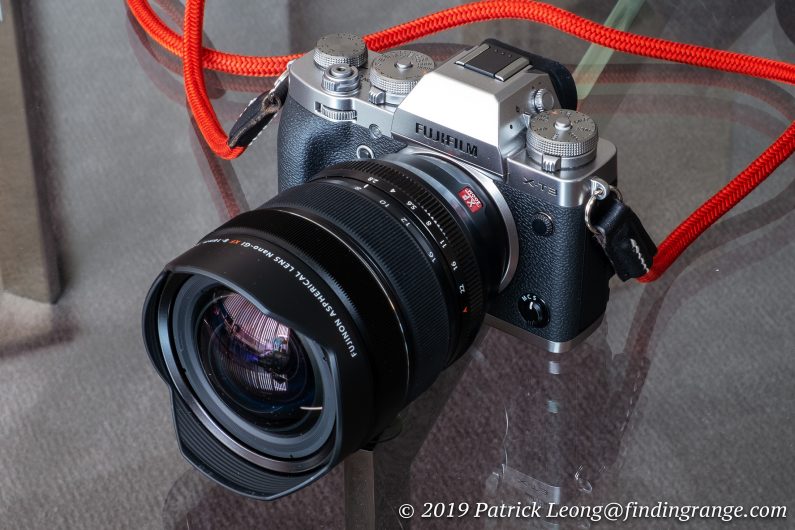
↑ The Fuji X-T3 with the XF 8-16mm f/2.8 R LM WR lens attached.
So far, everything looks great in terms of build, which it is but there are just a couple of issues normally associated with a constant aperture, ultra wide zoom that is built well, and has weather sealing. Those are size and weight. The XF 8-16mm f/2.8 R LM WR feels massive to me on a Fuji body. I was reviewing the XF 55-200mm at the same time but this lens actually felt larger even though I guess in terms of length, it isn’t. Plus, this lens isn’t light; it weighs 805 g or almost 1.8 lbs. Look, a lens with these features is going to be big and heavy, so this isn’t Fuji’s fault. But the Fuji bodies are light and compact, so the XF 8-16mm f2.8 just feels plain out front heavy when attached to them.
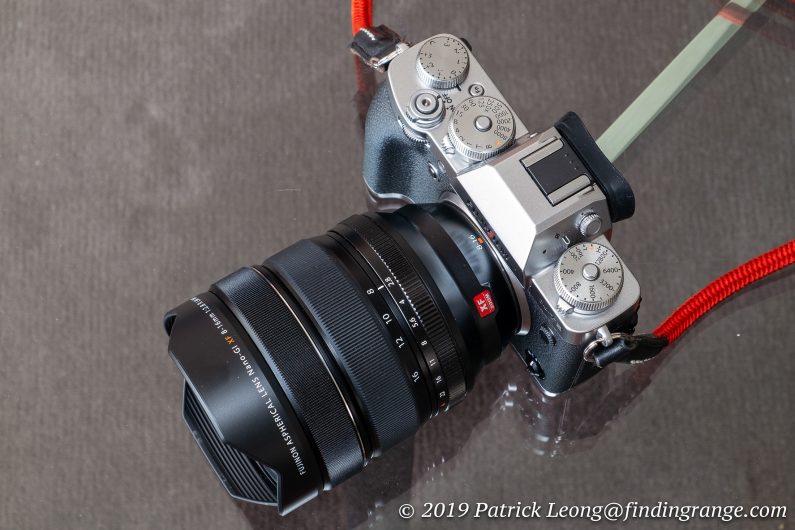
↑ Top view of the X-T3 with the XF 8-16mm. It’s a pretty large and heavy lens for the X Series if you ask me.
Fujifilm XF 8-16mm f2.8 R LM WR Lens Autofocus:
In terms of autofocus, I did all my testing on the X-T3, and found the XF 8-16mm f/2.8 R LM WR to be blazingly fast and silent. This should be a given considering the focal length of this lens, the linear motors, and the fact that Fuji has been heavily invested in speeding up autofocus in their cameras for the last few years. There’s not much to say about the autofocus because quite frankly, there were no issues that I ran into with it. Everything felt instantaneous even in dim lighting.
Fujifilm XF 8-16mm f2.8 R LM WR Lens Image Quality:
As for image quality, I don’t think I’ve run into a poor performing Fuji lens yet, and the XF 8-16mm f/2.8 R LM WR (12-24mm equivalent) is definitely no exception. This is a very, very sharp lens with color rendering, crispness, and clarity to match. At the 8mm focal length, center sharpness is excellent with just a little bit of fall off on the edges, which isn’t out of the ordinary. Stopping down does help, and I still noticed a little softness at f5.6 and f8 but please keep in mind that I am viewing these corners and edges at 100% magnification. In the real world, this is a brilliantly performing ultra wide that will produce some stellar images. The XF 8-16mm is one of Fuji’s best optical performers if you ask me. I found 10mm and 12mm to give me similar results as the 8mm with the 16mm performing even a bit better. At the 16mm focal length, sharpness overall at f2.8 is a little better but again, I am viewing these images at 100%. In normal usage, images are so sharp at any focal length that I honestly can’t see much of a difference in quality.

↑ This was taken at f11 with the lens set at 8mm. 400 ISO at 1/250.
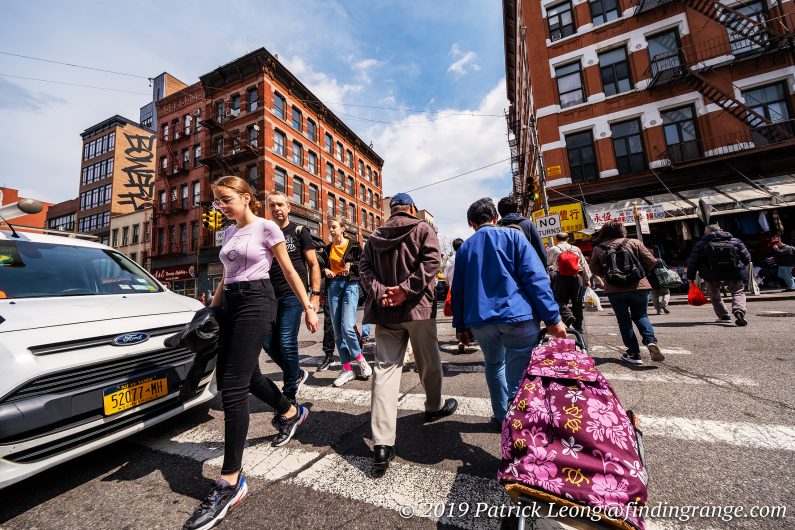
↑ This was taken at f5.6 at 8mm. 160 ISO at 1/600. While not the focus area, notice how sharp, and clear the signs are in the background.

↑ This was taken at St. Maarten using the 8mm setting at f8. 160 ISO at 1/350.
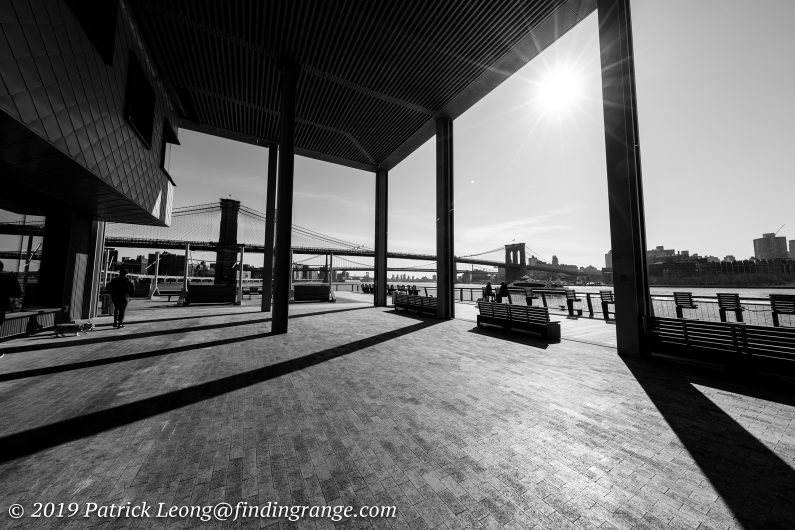
↑ Here’s another photo taken at 8mm. The settings were f8, 160 ISO at 1/480. Black and white conversion was done in Camera Raw in Photoshop CC.
As for other traits, there is some vignetting but nothing out of the ordinary considering the kinds of focal length range that this lens offers. As you stop down it clears up. Overall, I feel like f8 is where I produced the best results. Vignetting is gone by then and sharpness throughout the frame is great. Of course, this is just a reviewer talking on a technical basis. I’m just being purposely nit picky because it’s a review. The XF 8-16mm f2.8 can be used at all aperture settings to produce brilliant images. I did experience the occasional flare when using the 8mm focal length but overall, there weren’t really any major issues I encountered. Distortion is well-controlled considering this lens’ focal zoom range.

↑ I don’t shoot wide open much with wide angle lenses. This one however, was taken at f2.8 at 1/3800. The focal length used was 12.9mm.

↑ This is a 100% crop of the image above.

↑ Here’s another image taken at St. Maarten using the 16mm focal length at f8. The settings were 160 ISO at 1/350.

↑ This is a 100% crop of the photo above.

↑ Here’s another 100% crop.
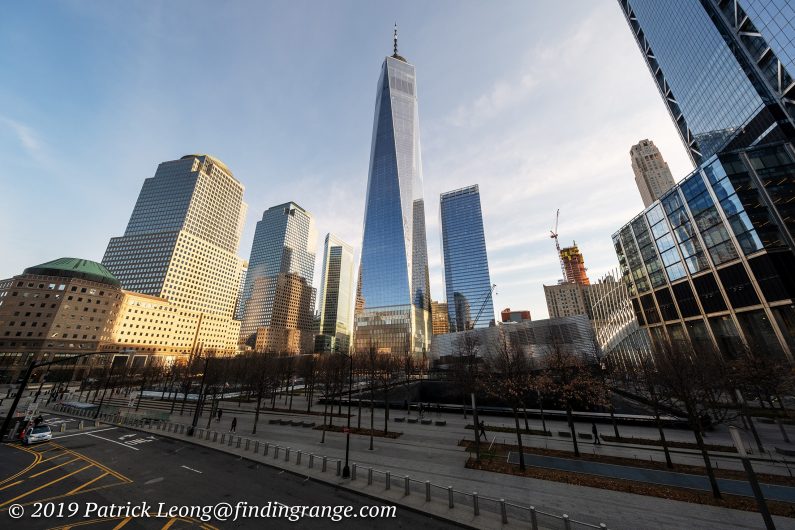
↑This was taken using the 8.1mm focal length at f8. The settings were 250 ISO at 1/250.
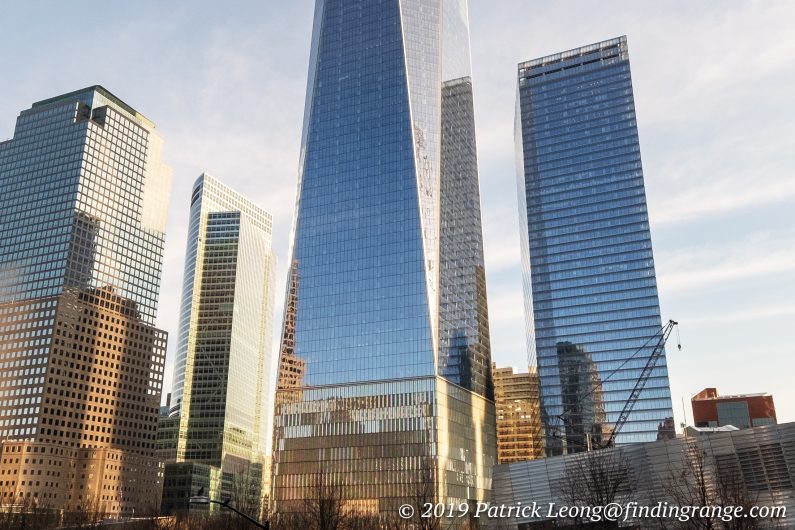
↑ Here’s a 100% crop of the photo above.
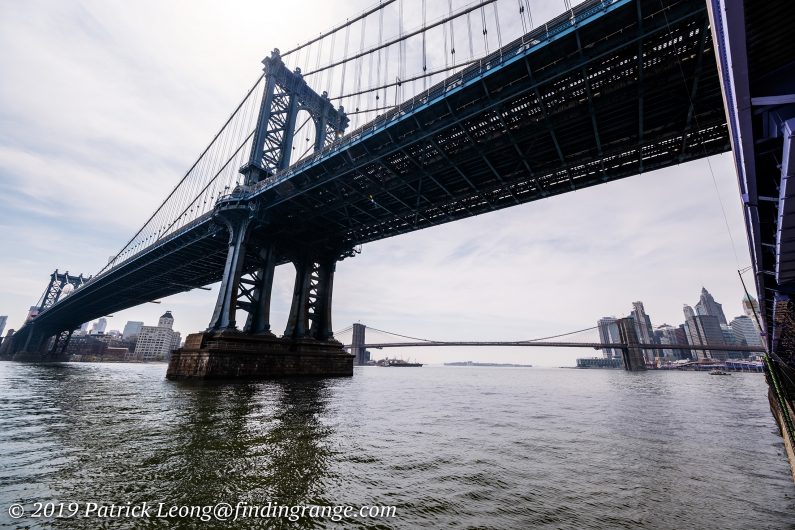
↑ This was taken with the 9.1mm focal length at f8. The rest of the settings were 160 ISO at 1/500.
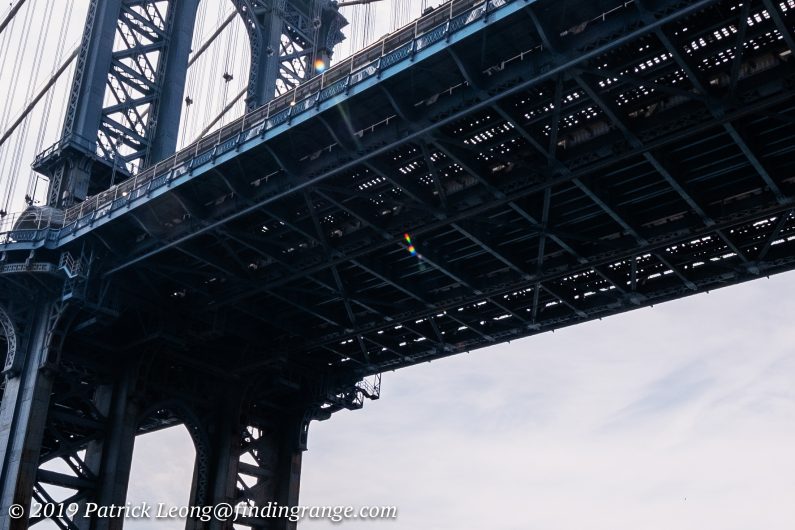
↑Here’s a 100% crop of the photo above.
While the XF 8-16mm f/2.8 R LM WR does offer a relatively fast constant aperture of f2.8, being that it is an ultra wide in an APS-C sensor camera system, don’t expect amazingly shallow depth of field. This is definitely not the kind of lens for those crazy bokeh shots. The large aperture is more for flexibility in dim lighting or when you need a faster shutter speed.

↑ While not a portrait lens, I did have a shoot recently, so I grabbed the XF 8-16mm just to give it a quick try. This was taken with the 16mm focal length wide open (f2.8). Notice the depth of field isn’t really shallow.

↑ This shot was also taken with the 16mm focal length at f4. The rest of the settings were 1600 ISO and 1/250.

↑ Here’s another shot in one o the kitchens on the cruise I was on taken with the 12.7mm focal length at f4. The rest of the settings were 1250 ISO and 1/250.
Fujifilm XF 8-16mm f2.8 R LM WR Lens Pros And Cons:
Fujifilm XF 8-16mm f2.8 R LM WR Lens Pros:
- Pro-quality build.
- Weather sealed.
- Fantastic image quality.
- Relatively fast, constant aperture.
- Pro-grade in every way.
Fujifilm XF 8-16mm f2.8 R LM WR Lens Cons:
- No filter thread.
- Large.
- Heavy.
- Expensive.
Fujifilm XF 8-16mm f2.8 R LM WR Lens Verdict:
Simply put, this is one of the nicest lenses to come from Fujifilm in a while. It’s exactly what Fuji wants it to be: a professional level workhorse with the build to match that will deliver the goods with very little fault.
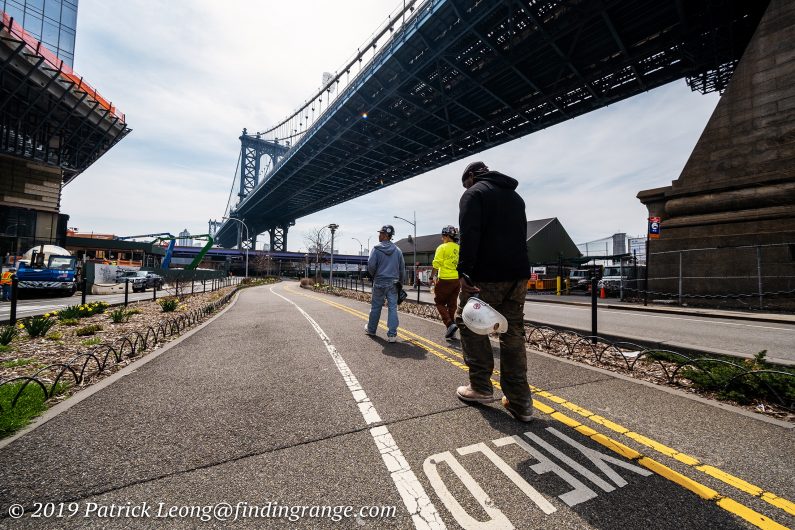
↑ This was taken at 8mm. The settings were 160 ISO, f5.6 and 1/550.
But is it for everyone? I can’t speak for others but at least for myself, I’m mainly a prime user and even with the focal length range of this lens, I found myself always using one or two focal lengths at most. Therefore I could get away with a prime lens, like my Zeiss Touit 12mm f2.8 or even the XF 14mm f2.8 R lens, which are both smaller, lighter, cheaper, and also offer excellent image quality.
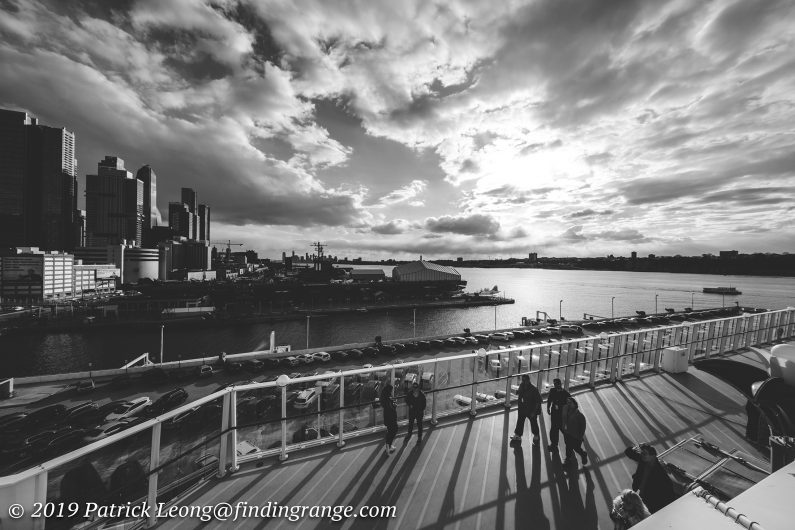
↑ This was taken at 8mm as well. The settings were 160 ISO, f8, and 1/480.
One could argue that the XF 8-16mm f2.8 has the ability to shoot ultra high quality photos as an 8mm, which is completely true. Simply put, I’m blown away by the quality at 8mm. In addition to its landscape potential, it was also really great to have the 8mm for interior photography. I went on a cruise for my vacation, and took a behind the scenes tour on my ship. I went into one of the kitchens, and in some areas, it was pretty cramped. I found this lens invaluable in these areas. However, besides these occasional (for me), unique situations, the 8mm is just not a focal length I really use much. When I first received this review sample, I thought I’d have so much fun with the 8mm but I just found it too wide for my taste. In fact, I must admit that I struggled at times to find a use for the 8mm focal length while I was reviewing it.

↑ This was taken in San Juan, Puerto Rico using the 16mm focal length at f8. 160 ISO and 1/550.
If I use at most one or two focal lengths, and I don’t use the lens at 8mm much, it’s hard for me to justify to myself carrying a lens of this weight and size. I was actually a little surprised at how much space this lens took up in my bag. Like I mentioned earlier, a lens of this caliber and quality is going to be big and heavy, so it’s not Fujifilm’s fault, and it’s not out of the ordinary when compared to similar lenses. Look at Nikon’s or Canon’s; they’re all large. But still, I went down to the Caribbean for my vacation, and with the heat and sometimes the walking, I definitely found myself missing my lighter, and more compact Zeiss a bit :).
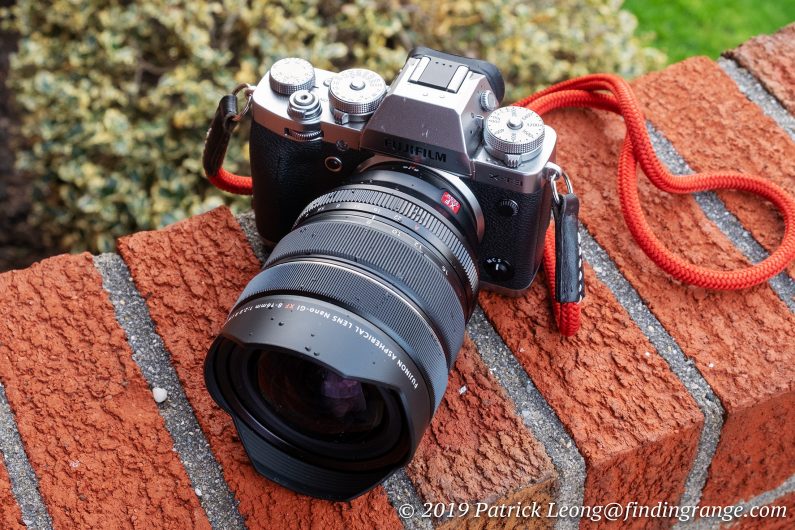
↑ It had just started to rain when I was taking this product shot. Luckily, the XF 8-16mm f2.8 is weather proof ;).
If however, you want a fantastic 12mm equivalent for your Fuji, shoot with ultra wides quite frequently, come from a DSLR system that has a similar range zoom or have been waiting to switch to Fujifilm but wanted a zoom with this range and constant aperture to be released, then the XF 8-16mm f2.8 R LM WR is probably the perfect lens for you. As I mentioned numerous times in this review, build is excellent and image quality is superb. Yeah, it’s expensive but at the same time, it does deliver the goods, and then some. If you ask me, this is one of Fujifilm’s best lenses so far, and it’s fully up to the task, and high demands of professional use.
Thanks for taking the time to read my review! If you’re considering purchasing the XF 8-16mm f2.8, and my review helped you decide, please help support this site by purchasing from any of the links in this review. It will not cost you anything extra. Thank you for your support!

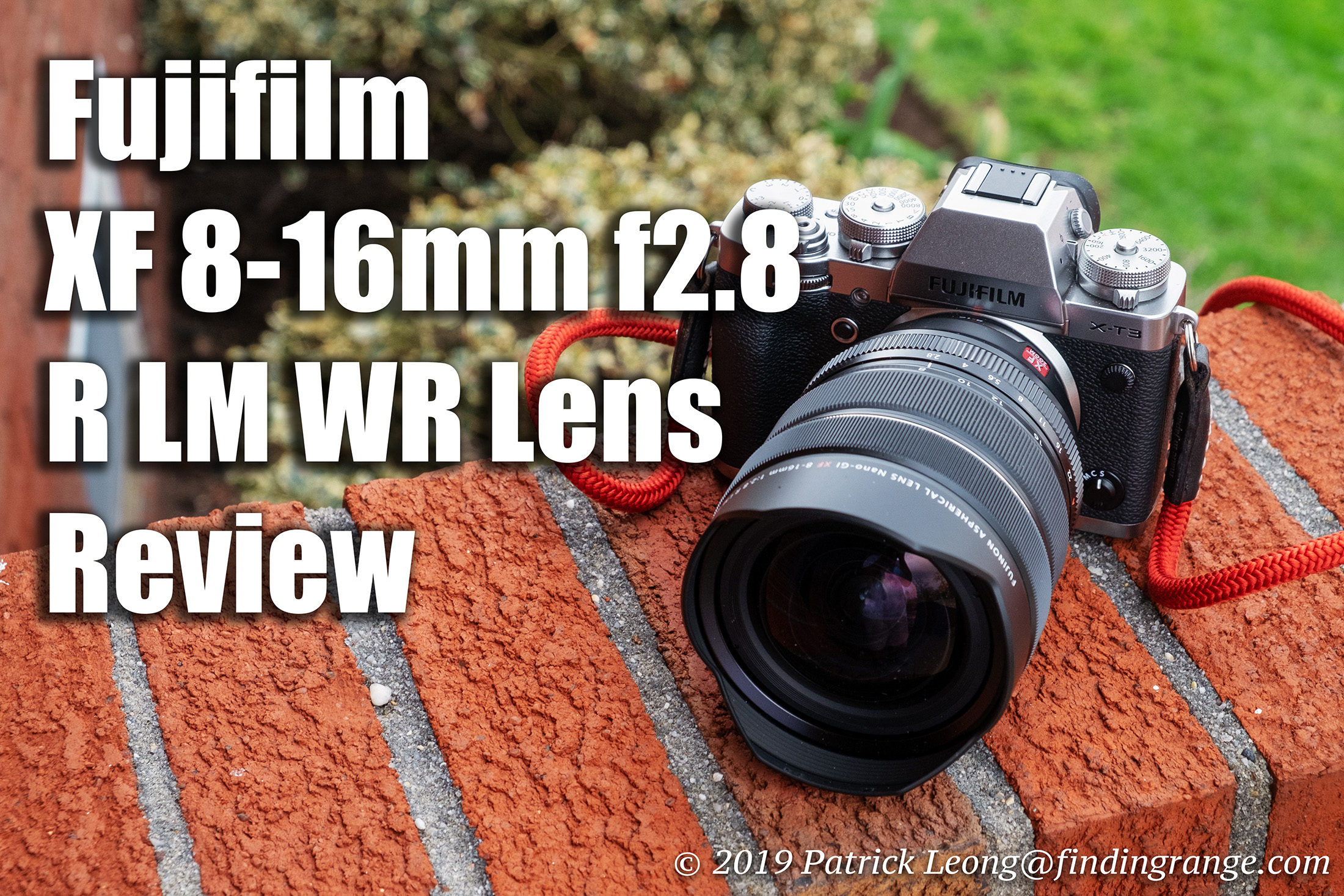
Hi Patrick,
As usual an excellent review. As your photos showy, a truly excellent lens. I saw it last month at the Fuji Wonder Shop in NYC. Size wise it’s a monster. For me, I’d rather save my money for the X-Pro3 hopefully later this year.
Thanks Steve!
I appreciate you stopping by as always! Yes, it’s a large lens lol. The X-Pro3 should be nice. Hopefully it’ll come out soon :).
Best,
Patrick
Hi Patrick,
Another great review that I enjoyed to read. Also a lot of great images… However some call my attention more than others, sorry.
Sentry Hill in St Maarten was one of my favourite trail that I was doing really often but hiking from bottom to top as the zipline was not functioning when I left the island after hurricane Irma.
When did you visit my island? Did you enjoy?
Best regards
Philippe
Thanks Philippe!
It’s ok :)! No apologies necessary, that’s why I have a mix of images :).
You used to live on St. Maarten??? It’s one of my favorite islands! I’ve been there several times with my last visit being in mid to late March. Every time I’m there, I don’t want to leave haha :). Wish I was back there now!
Best,
Patrick
Yes Patrick I live in St Maarten during 18 years.
On September 2017 after Irma I sent my family to France as the conditions was not good for the children especially school related.
I join them end of January 2018 and since then we live not too far of Nantes.
I miss my island and all the friends I leave over there.
My body is here but my heart is still in the Caribbean…
Best
Philippe
Lucky you, Philippe! I can also understand your heart still being in the Caribbean. I can’t wait to go back, and I must admit, I am still daydreaming a bit about being there now :). Are you ever planning on moving back?
Best,
Patrick
Hi Patrick, you haven’t tried the little 16mm marvel yet, have you? 🙂 I’ve put some pictures on Amazon UK with a quick review. I bet you’ll love that 16/2.8
Hi Mahesh!
I have not tried it yet but I may review that along with the X-T30 next or the Ricoh GR3…can’t decide yet lol. I’ve been trying to review equipment that I think will work with whatever particular shoot I will have, so I can both post reviews faster, and also get some real world experience with the gear. But right now, I am editing a ton of different shoots I took before I went on vacation, so no shoots in the near future lol.
Back to the lens, I’m glad they came out with it. I’m usually willing to trade in a little speed for a smaller lens when it comes to wide angles because I always shoot them stopped down anyway. Great review btw! I love your pics too!
Best,
Patrick
Hey Patrick,
Great job on the review. We share the same sentiment when it comes to massive lenses on tiny bodies. I do love the color rendering on the lens and great job controlling distortion with the portrait shot.
Dane
Thanks Dane!
…and yes we do haha! I also appreciate the comment on the portrait pic. I know this isn’t a portrait lens but I figured why not :)? Thanks for stopping by!
Best,
Patrick
Patrick,
This looks to be an excellent performer for those willing to manage its size & weight on the smaller X bodies like my X-T3, but its not for me. Also couldn’t use my Breakthough circular ND filters for long exposure. You didn’t discuss it , but also don’t want a lens this size & weight without OIS – tried the 16-55 & gave it up for that reason.
Jed
Hi Jed,
Yes, for those that need it, I think they’ll be very happy with the performance. Fujifilm did an excellent job with this lens. As for the OIS, I didn’t find camera shake much of an issue because the focal length range is so wide. I took a few pic in dim lighting at pretty slow shutter speeds, and the pics came out tack sharp :).
Best,
Patrick
Patrick,
It must also be your younger & steadier hands, because even though I know that stabilization isn’t thought to be needed with wide angle lenses, this wasn’t my experience when shooting with the wide end of my 16-55. Unless it was on a tripod, I still got some camera blur when shooting hand held. Because I wanted to be able to use it both ways, I finally gave up on it & returned to the 18-55 with OIS & then got the 10-24 zoom, which also has stab. So apparently Fuji wasn’t so certain about not needing stabilization with their first wide zoom either. This wide zoom is also about at my limit for size & weight on my smaller form Fuji bodies.
Jed